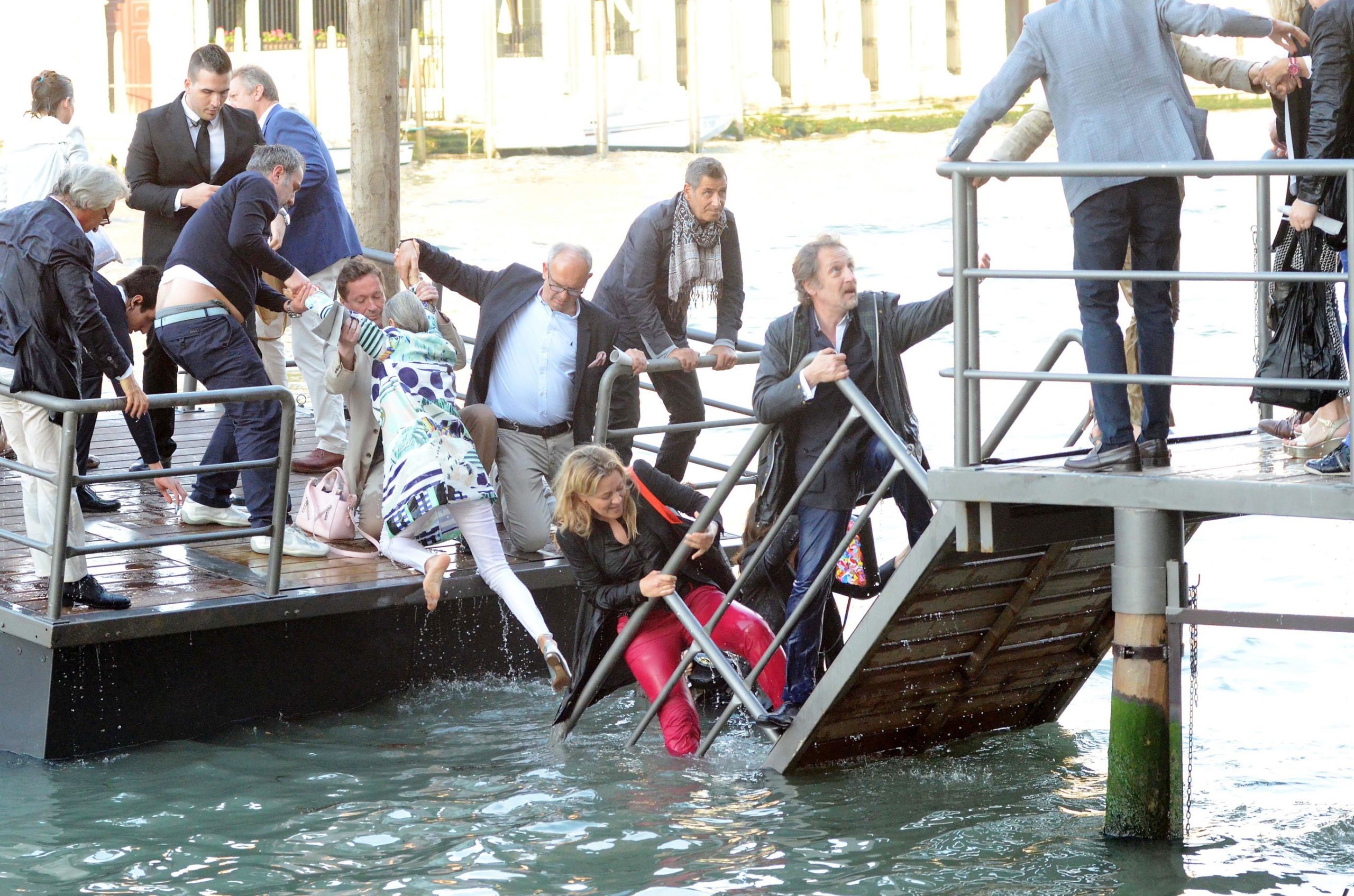
Snapshot is a weekly series that zooms in on a single photograph to explore the context of an image, the conditions it is created within and its wider cultural impact.
The “global art world” can be a ridiculous place. The constant cycle of champagne soirées, elite gala dinners and VIP previews has little to do with creativity and everything to do with exclusivity. It is a world few get to touch, and while the glamour can be intoxicating if you get to step even briefly inside, the reality is that all of this usually happens at the expense of accessibility, community and sustainability. No wonder, then, that so many delighted in a massive dose of schadenfreude when a group of glitzy Venice Biennale party-goers were papped tumbling into the Grand Canal, back in 2015.
At the time, the scene of well-heeled art A-listers clutching onto a collapsed jetty (which buckled as they stormed their way to a Fondazione Prada party, despite pleas to form an orderly queue) was fantastically comical. Each snap, all 43 of which were documented by La Nuova di Venezia e Mestre, is a wonderfully composed tableau, as flailing limbs and shocked grimaces accompany a tangle of sodden designer outfits.
“In the moment that this picture was taken, a fragile structure quite literally collapses under the weight of people’s impatience and self-importance”
However, the image is arguably much more than an amusing anecdote. It is a prophetic representation of the cannibalistic culture of art fairs, biennales and markets, where an attitude of “more is more” continues to dominate—at least until the pandemic. In the moment that this picture was taken, a fragile structure quite literally collapses under the weight of people’s impatience and self-importance.
Several years ago, the upper echelons of the art economy might have seemed precarious, and the public culture sector was already exceptionally squeezed, but few could have predicted how quickly everything would come crashing down in the wake of coronavirus. This shot can now be seen as something of an omen, warning us of the many more collapses that would follow.
As the world entered lockdown, society was forced to pause, and plenty of us have had the opportunity to take stock of what indeed constitutes “essential” activity and travel. It is telling that the wealthier among us continued to jet around the world throughout the crisis, isolating in second homes, yachts and private resorts.
“Such a lack of concern draws parallels with the pandemic, where those with means needed not worry about the long-term effects of a crisis”
It is also worth noting that while Venice’s tourism industry has undoubtedly suffered in the last two years, biodiversity has thrived. The swampy waters that those guests were plunged into became cleared, as boats and gondolas give way to ducks and jellyfish. The city has struggled for years to find a way to tackle irresponsible sightseeing and destructive travellers, of which the biennale hordes must surely be included. In a few short months the effects were dramatically reversed, paving the way for a new, more sustainable ecosystem for human and animal residents alike. Just how long this will now last remains to be seen.
When reassessing this picture, it is evident that rather than being horrified and disgruntled, the subjects appear jolly in their misfortune. Subsequent shots show them clambering out of the canal with the aid of suited security staff, seemingly unperturbed by the unfortunate event. This could point to optimistic camaraderie, or the fact that wealth allows you the freedom to remain undaunted by a water-logged iPhone or a ruined suit.
Such a lack of concern draws parallels with the pandemic, where those with means needed not worry about the long-term effects of a crisis that destroyed so many people’s livelihoods. At the end of the day, while institutions shutter and unemployment spikes, there will always be someone to pull them out.




